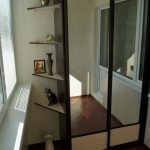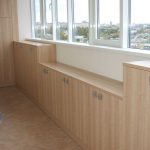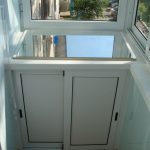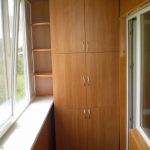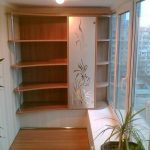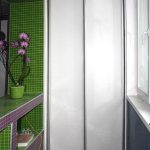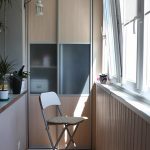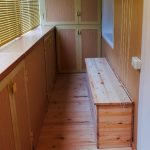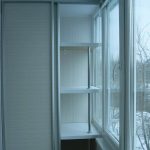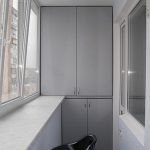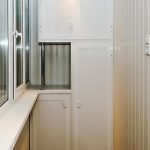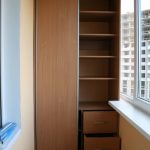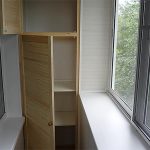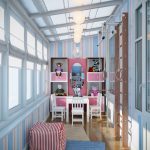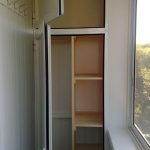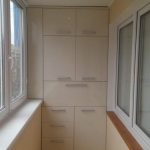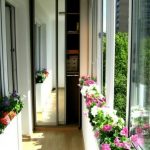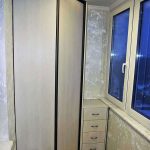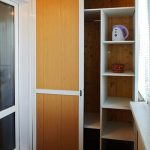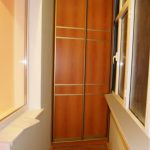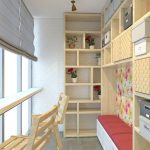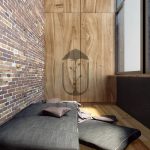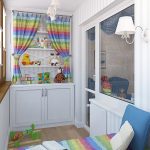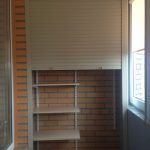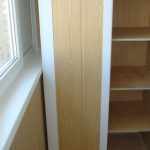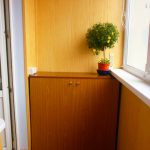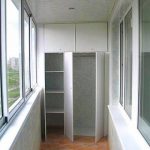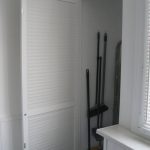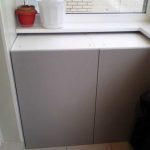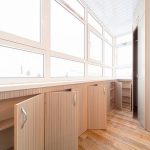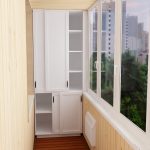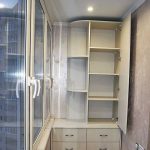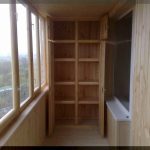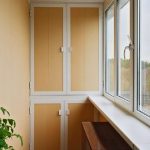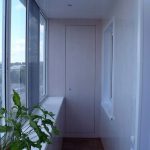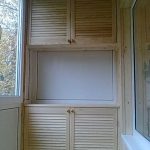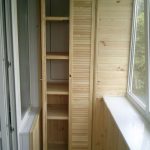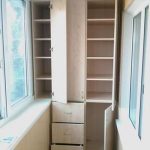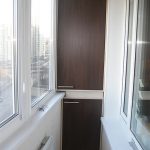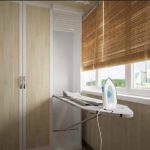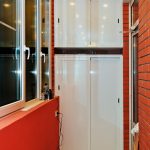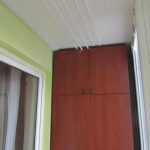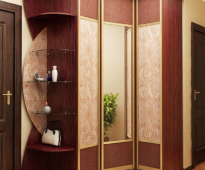 Advantages and disadvantages of a corner cabinet in a small hallway
Advantages and disadvantages of a corner cabinet in a small hallway
How to make a wardrobe on the balcony do it yourself
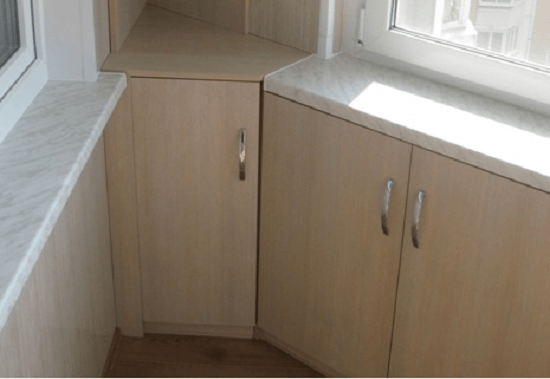
Built-in corner cupboard on the loggia and cabinet along the window
Each family has items that are needed only in a certain season, or are not suitable for placement in a residential area. A balcony or loggia in a small apartment is often the only place to store such things. In modern conditions, loggias are increasingly decorated, turned into a cozy addition to the room. This custom poses the problem of organizing a special storage space.
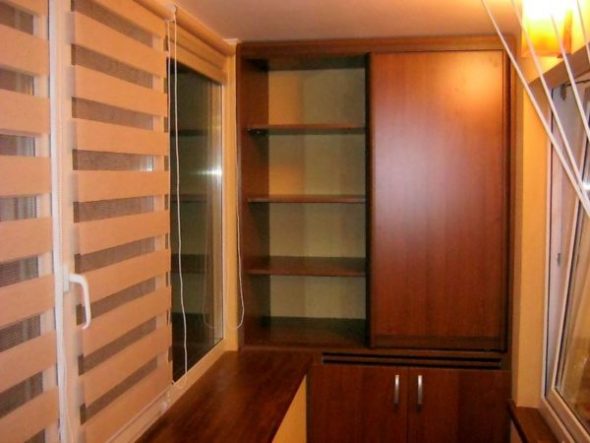
Properly placed closet will arrange the space on the balcony or loggia
Installing a cabinet on the balcony is the best way out; it will allow keeping small objects in order, and large-sized ones will be hidden from sight. Things will always be at hand, conveniently laid out on the shelves. You can choose such a wardrobe in any furniture store, now there are many varieties that attract with functionality and variety of design. If the loggia is framed in addition to the main room, it will not be difficult to choose a cabinet option that fits to the overall appearance of the interior. The disadvantage of buying in the store will be a possible size mismatch. This will lead to the loss of wasted space, which in the conditions of small-sized housing is precious.
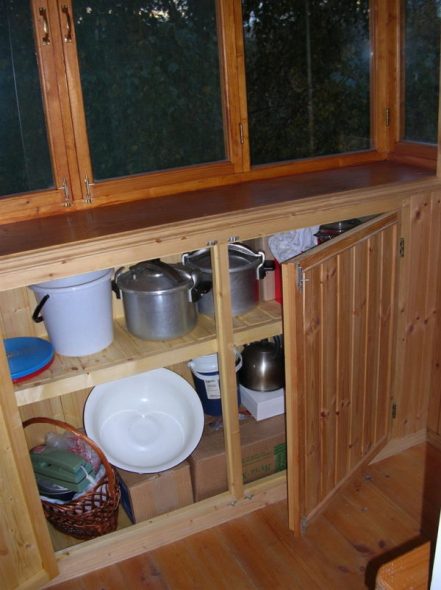
A long cabinet placed along the entire window is very roomy and compact.
Ordering a cabinet in a furniture workshop will avoid this problem and will also provide a fairly wide choice of models. But of course this method will require more significant costs. Therefore, if there are some carpentry skills, the best solution would be to build a wardrobe with your own hands - you will have to spend money only on materials, and you can make the dimensions, layout and appearance exactly the way you want.
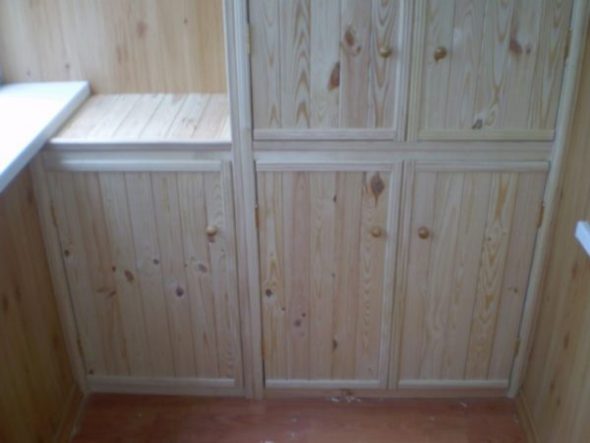
High two-level wardrobe with hinged doors and side bollard
Content
Distinction of types on a design
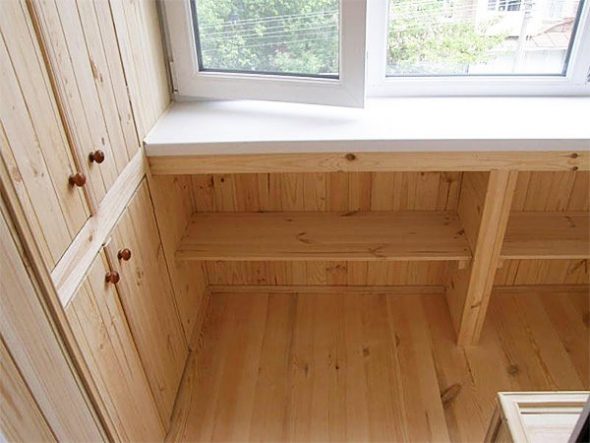
Comprehensive solution: a high cupboard with doors and open shelves under the window along the loggia
If you decide to make a wardrobe on the balcony with your own hands, at the very beginning it is necessary to determine its design. There are two main variants of the cabinet design - straight, most spacious, and angular, suitable for conditions when there is very little space on the balcony. Cabinets can be medium in size, height of human height, or occupy space to the ceiling of the loggia. Shelving cabinets, which are open shelves, and closed classic cabinets that protect items from collecting dust are widespread.
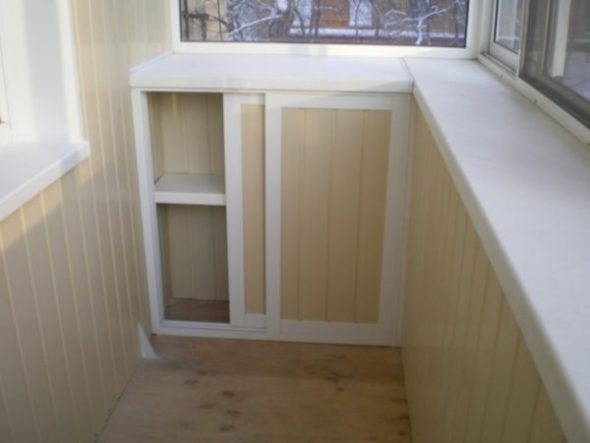
A small cabinet under the window, plastic-sheathed
Of great importance for the convenience of operation is the design of the cabinet doors. According to this distinction, several basic schemes are distinguished.
- Swing doors - the traditional version, offering a convenient operation, reliability, aesthetic look. The disadvantage will be the necessity to leave free space in front of the cupboard, which can be difficult in the conditions of a small balcony area. Sometimes the hinged doors are decorated under the blinds - it is more aesthetic, but time consuming for the execution of the form.
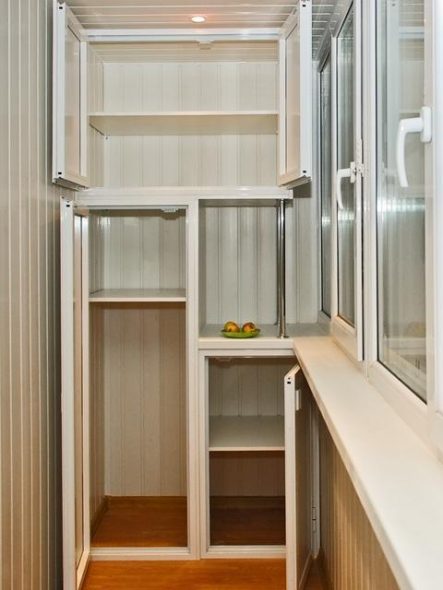
Swing doors are the simplest and relatively cheap option, but they are not always convenient.
- Rolling shutters - one of the most common options, combining low cost and functionality. This door resembles blinds, rises vertically, does not take up space when you open the cabinet and allows you to have other objects and furniture close to it. Roller shutters have a long service life and are easy to operate.
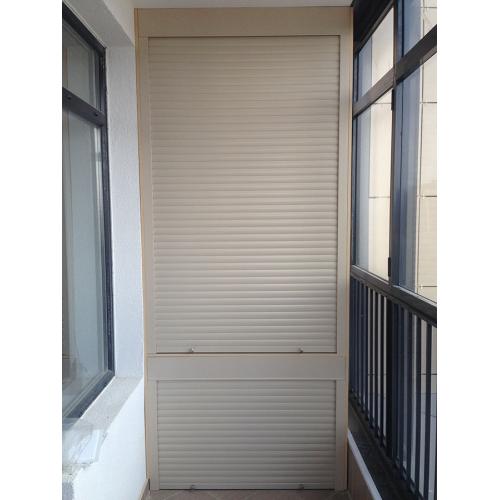
Roller shutters as doors to the balcony wardrobe - a convenient, but expensive option
- Sliding doors are also a popular option that looks more aesthetically pleasing than roller shutter systems. The doors move along the guides, also allowing you to save loggia space without taking up space. But when opening the sliding doors, the doorway is still half closed, so it will be impossible to place a large object in the closet without removing them.
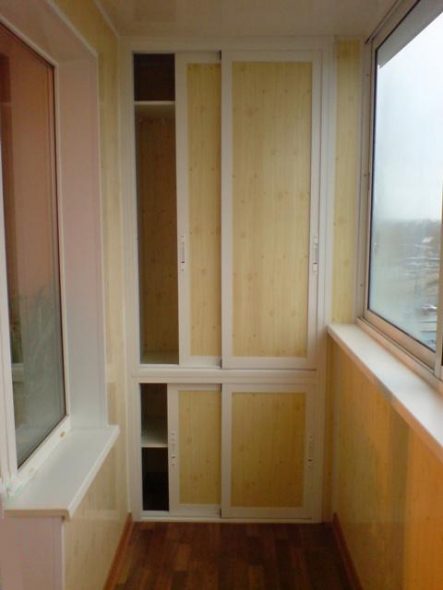
Convenient and economical option - compartment doors
- Folding door - the design resembles an accordion screen. The most convenient option, also saving space and tearing the opening of the cabinet almost completely. Despite the convenience, such doors are usually inferior in strength and durability to their counterparts, and because of the lack of closure of the opening inside the cabinet gets dust and moisture.
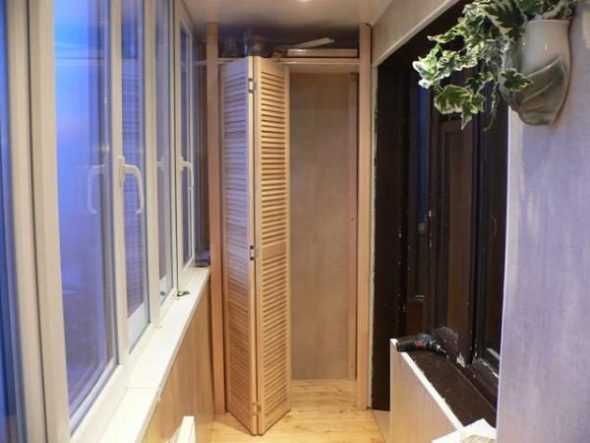
Folding folding door takes up little space
The internal structure, system of shelves, their depth and height should be developed taking into account the sizes and types of concrete things that will be stored there. For example, a high vertical compartment will be required for ski storage, a hanger will be required for winter clothing.
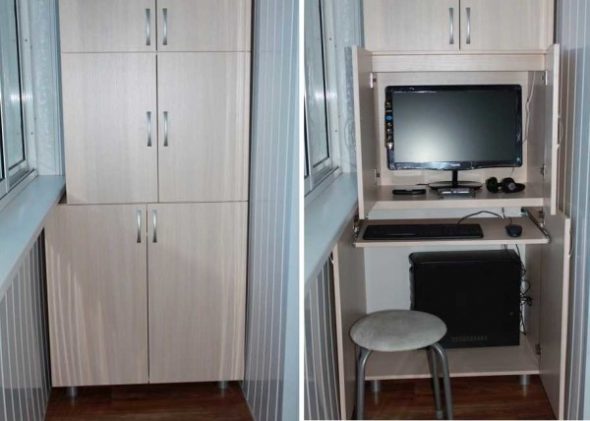
Cabinet variant on a three-part loggia and an example of its use
Necessary materials

Spacious wardrobe on the balcony in modern style
An important factor in the manufacture of the cabinet on the loggia or balcony will be the choice of material. We must not forget that even on a glazed loggia, the temperature and composition of the air will most likely be different from the dwelling and will need durable material that is resistant to various influences and humidity drops. In addition to performance, appearance is also important, because the cabinet should not disharmonize with the design of the loggia, and often is a continuation of the overall style of the apartment. The following types are most common.
- Wood is a material that has earned respect in construction since ancient times. The tree is completely eco-friendly, convenient in processing, aesthetically pleasing, and durable. If you choose the right type of wood, the cabinet will not be damaged by temperature changes and high humidity. The only disadvantage of this material is the relative high cost (the cost varies greatly depending on the type of wood), as well as the tendency to damage by mold, fungus, insects.
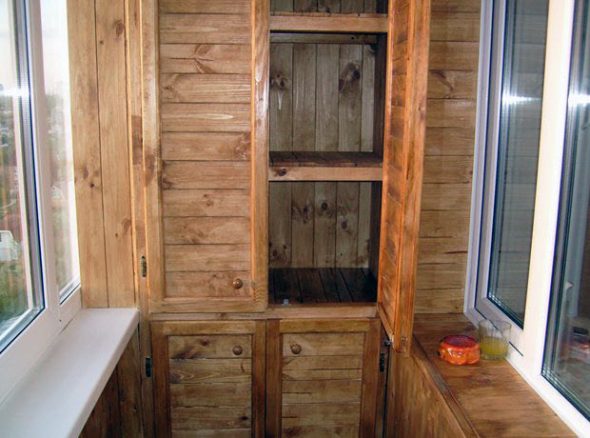
Unusual wooden wardrobe on the balcony
- Chipboard panels are a cheaper analogue of wood, which is almost as good as it looks. Thanks to the chipboard lamination technique, it is possible to impart color, the texture of any wood species, and the material properties guarantee durability and resistance to external influences.
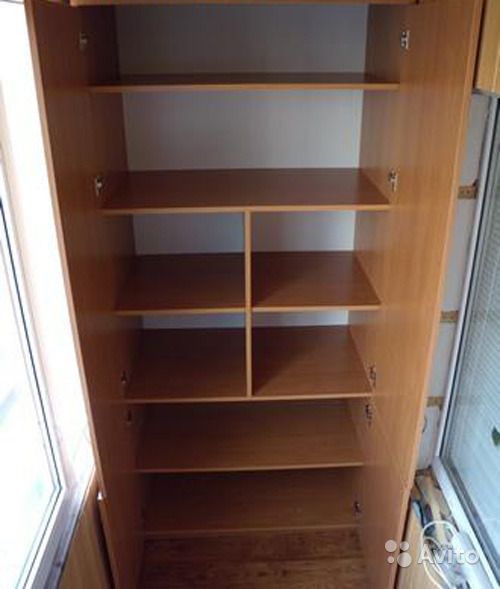
Wardrobe on the balcony of chipboard do it yourself
- MDF is a lightweight, easy-to-use material, the disadvantage of which is lower strength, ease of formation of chips on the surface during processing.
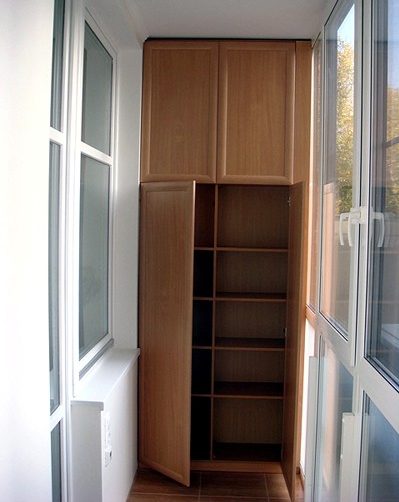
The original wardrobe on the balcony of MDF
- Drywall - inexpensive and very easy to handle material. Parts are quickly mounted using a conventional screwdriver, the resulting frame is lightweight and stable. But because of its lightness, drywall is inferior to other analogues - it will not be possible to store heavy items in this cabinet, shelves will not withstand long-term static loads.
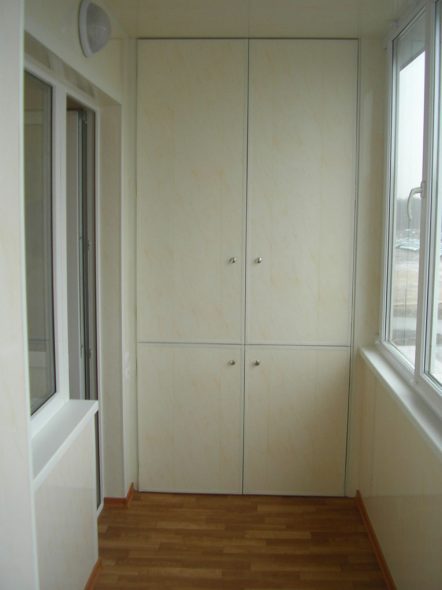
Plasterboard cabinet on the balcony
The design of the cabinet also depends on the color and texture. Laminated panels offer the greatest variety, but a drywall cabinet can be painted or pasted over with a special decorative material that also has moisture-proof qualities.In conditions of a small space on a loggia or balcony, it is recommended to choose light colors that visually increase the area of the room.
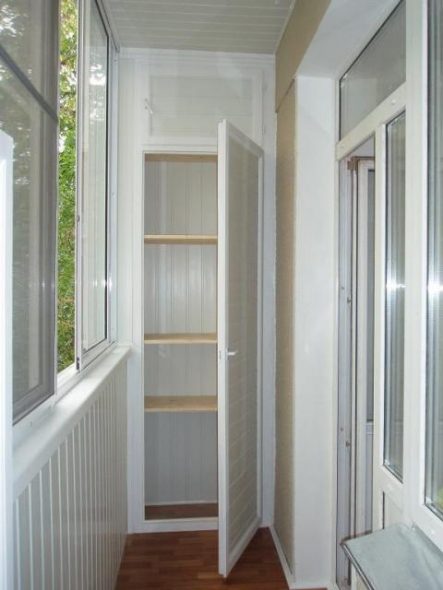
Another possible way to make a wardrobe on the balcony is plastic panels.
Be sure to pay attention to the accessories, fasteners - will need hinges for the doors, handles, guides, corners. Fittings can be metal, made of durable plastic. It is best to purchase all the details in a specialized hardware store, choosing according to the material of the cabinet.

You can make a closet of two parts of different widths or depths.
Required Tools
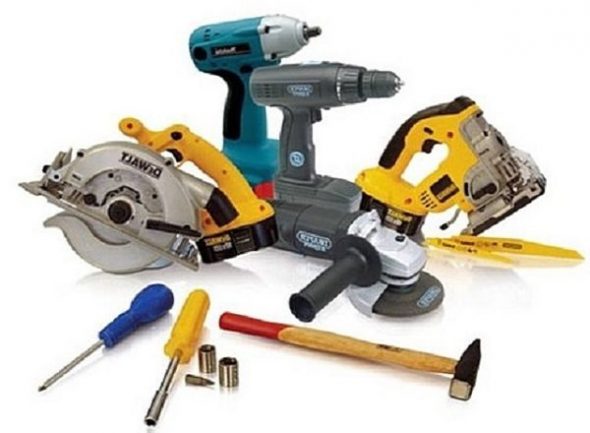
The list of tools needed for joinery work on the arrangement of cabinets made of wood
When deciding how to make a closet on the balcony with your own hands, not least is the selection of tools. For high-quality work you will need the following set:
- perforator and drills (for wood and for concrete);
- saw-hacksaw;
- electric jigsaw;
- screwdriver;
- screwdrivers;
- self-tapping screws with dowels;
- hammer;
- roulette, building level.
In addition, you will need paper and a pencil for the manufacture of the drawing, as well as a marker for marking on the details.
Manufacturing steps
Before starting the assembly, the conditions are checked - the balcony should be already glazed, it is better to close the walls of the loggia with thermal insulation. The most important point is a flat base - if there are differences in height, the cabinet frame under the load of objects sooner or later will squint. Therefore, before starting work, the foundation is checked with the help of a building level and, if necessary, leveling is carried out - the easiest way is to build a flooring.
If everything is ready, you can get to work. To figure out how to make a closet on the balcony, it is enough to follow the following steps.
- Drawing up a drawing. With the help of a tape measure, the height and width of the loggia is measured, the desired depth of the cabinet is measured. A drawing is made on paper, taking into account the size of things for storage, the number of shelves and their height are calculated.
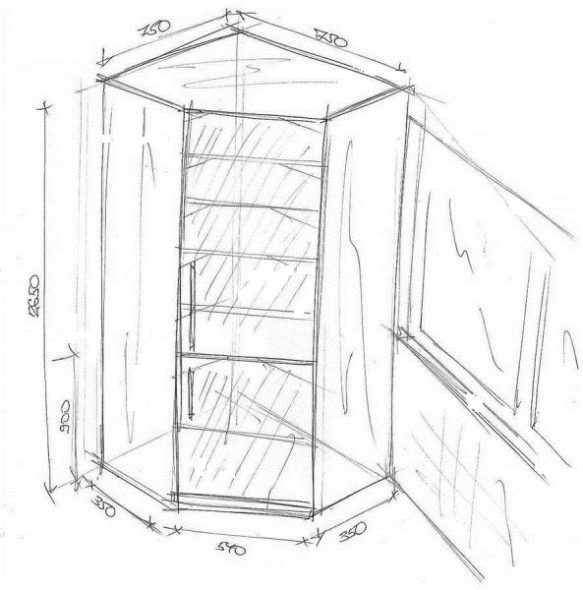
Sketch of a corner cabinet for installation in a loggia or balcony
- The drawing is carefully transferred to the selected materials by scaling or marking with a level. After checking the parts are sawed with an electric jigsaw and a hacksaw.
- Manufacturing frame. First, markup is performed using a marker and a level (or ruler) - guiding lines are drawn on the walls where the frame bars will be fastened.
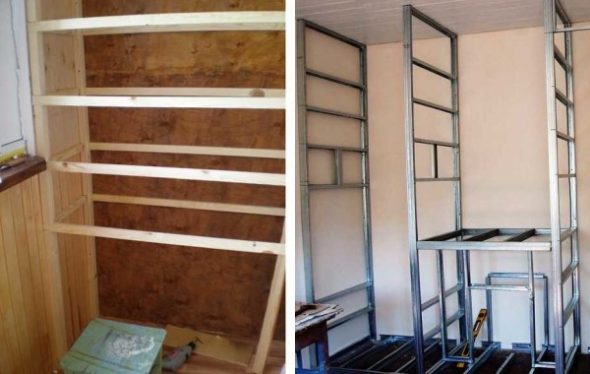
For the framework, mainly two materials are used: wooden beams and metal profiles.
- Boards and guides are attached directly to the wall or cladding loggia. By means of a drill, self-tapping screws on the dowel, the screwdriver is mounted. For fastening fit reliable wooden bars or metal profile. If the cabinet is made of plasterboard, additional elements from a metal profile must be installed to increase the stability of the product.
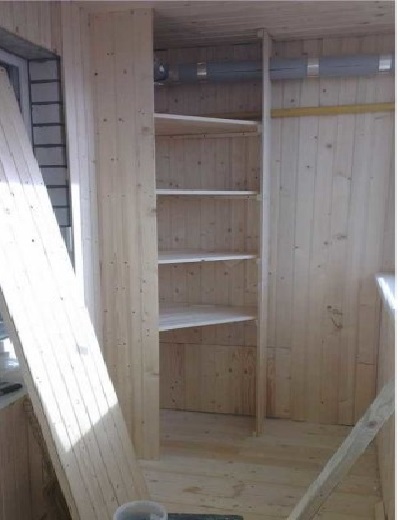
We fix on the wall bars of the future cabinet, install shelves
- Walls are attached to the frame of the selected material. The back of the cabinet, adjacent to the wall of the balcony, also necessarily closed with a sheet of plywood or chipboard - this will help keep the interior of the cabinet from moisture, temperature changes. The walls are mounted on screws, for better fixing used furniture corners, screed. If the cabinet is under the ceiling, a simplified version of the design is often used when the shelves are mounted directly on the frame guides, and the frame is assembled to install the doors.
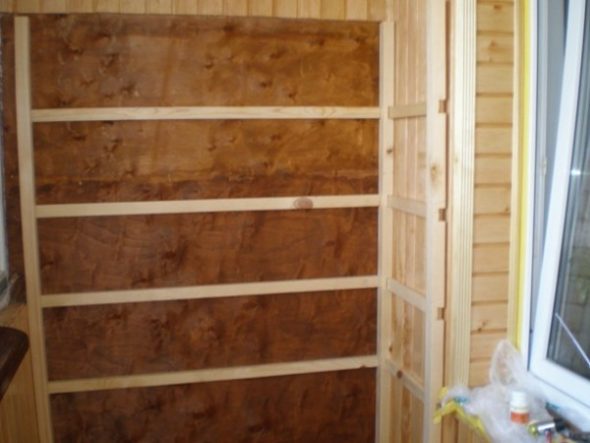
As a back wall of the future cabinet we attach a chipboard sheet
- In accordance with the drawing shelves are installed. The material for them can be wood, chipboard or drywall - to orient better to the weight of things that will be placed there.
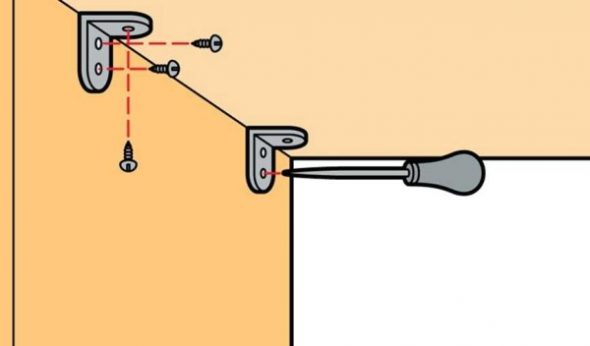
Fasten the shelves to the corners
- Hinges or guides for doors are attached. Then the doors themselves are installed, the latter are attached to the opening handles.
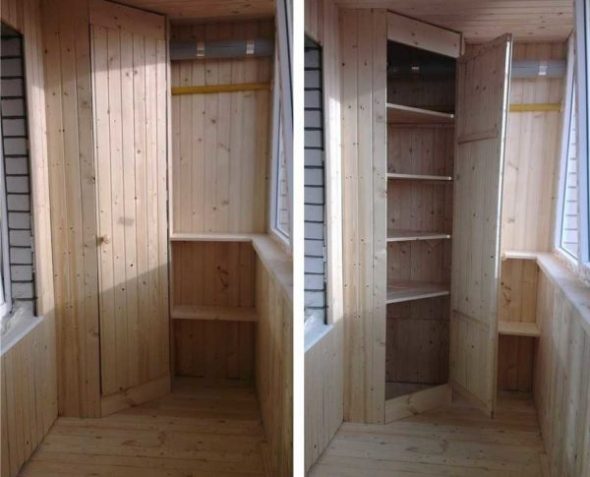
We hang the doors on the corner cabinet
After completion of the work, it is recommended to glue the cabinet with an insulating coating for additional protection against moisture. It is also possible to hold an electric lamp, to increase the convenience of operation. With the right selection of materials and tools, careful and responsible approach to the performance of work, the result will please the owners with their functionality and beauty for many years.
Video: Cabinet to the balcony
Photo gallery of comfortable, functional and beautiful cabinets for a balcony for every taste:
 Advantages and disadvantages of a corner cabinet in a small hallway
Advantages and disadvantages of a corner cabinet in a small hallway
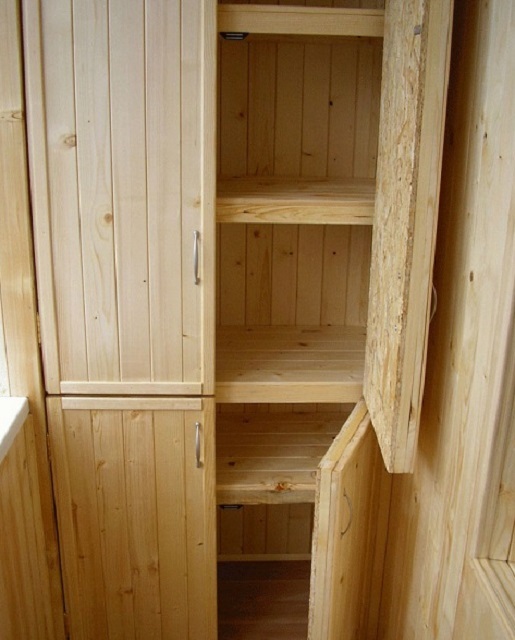 How to make a wardrobe on the balcony of the wall paneling: process features and step by step instructions
How to make a wardrobe on the balcony of the wall paneling: process features and step by step instructions
 Step by step instructions on how to assemble a corner cabinet.
Step by step instructions on how to assemble a corner cabinet.
 How to paint a chipboard cabinet in white
How to paint a chipboard cabinet in white
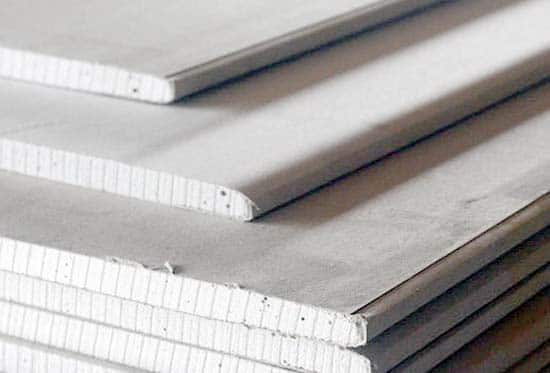 Step-by-step installation guide for a plasterboard cabinet
Step-by-step installation guide for a plasterboard cabinet
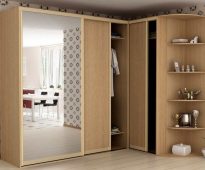 Corner wardrobe - everything you need to know
Corner wardrobe - everything you need to know
